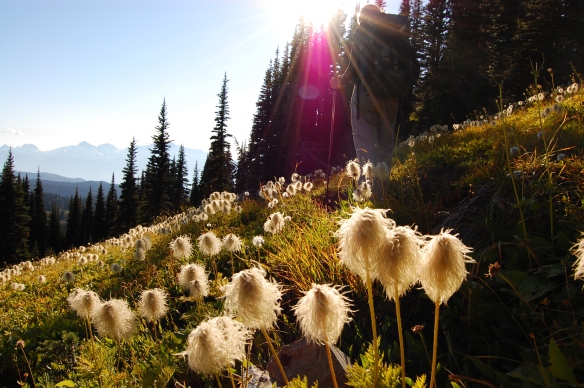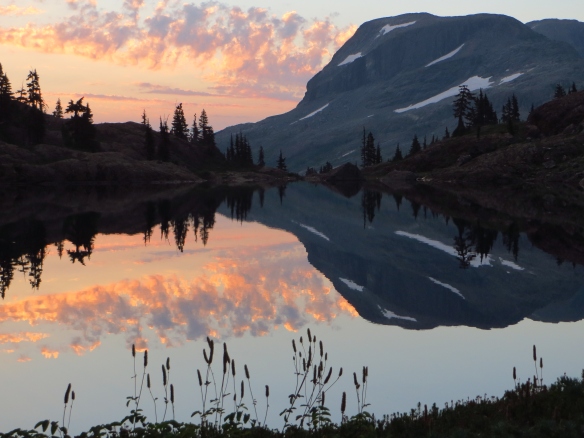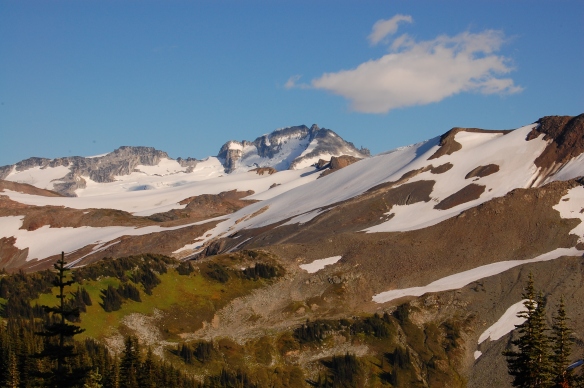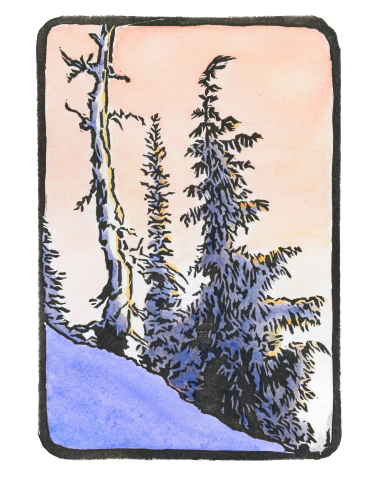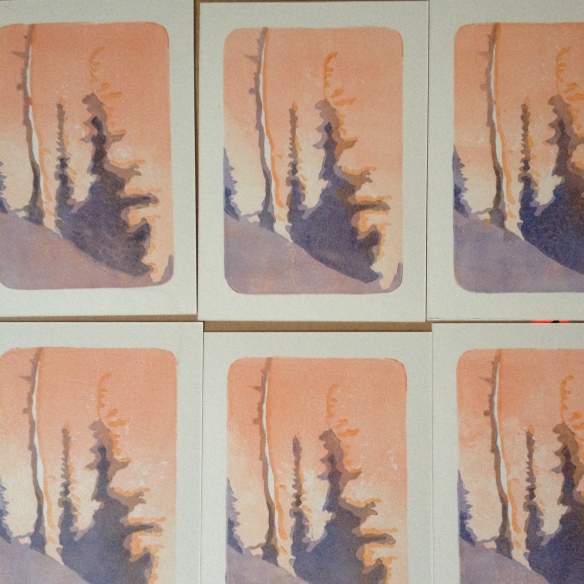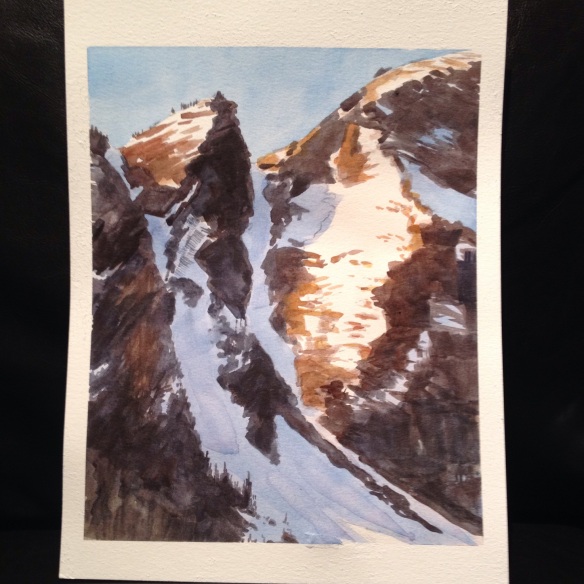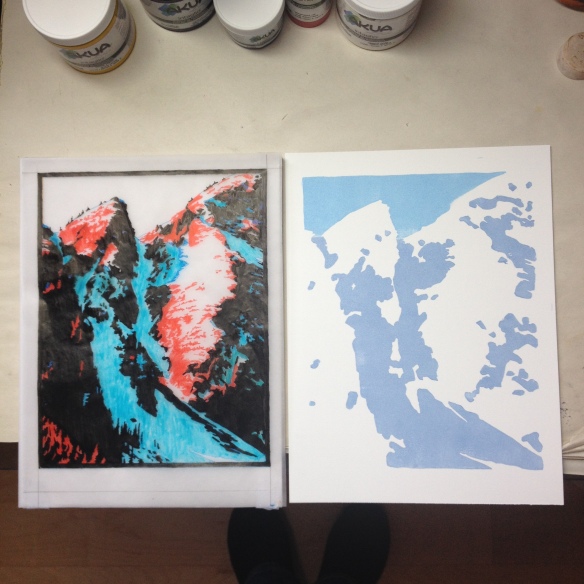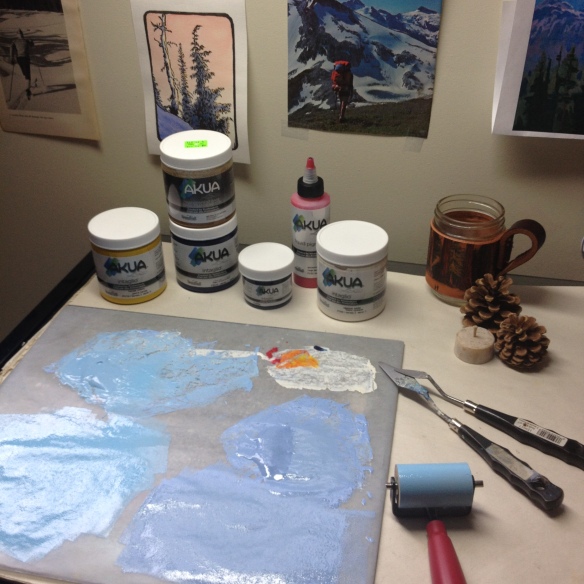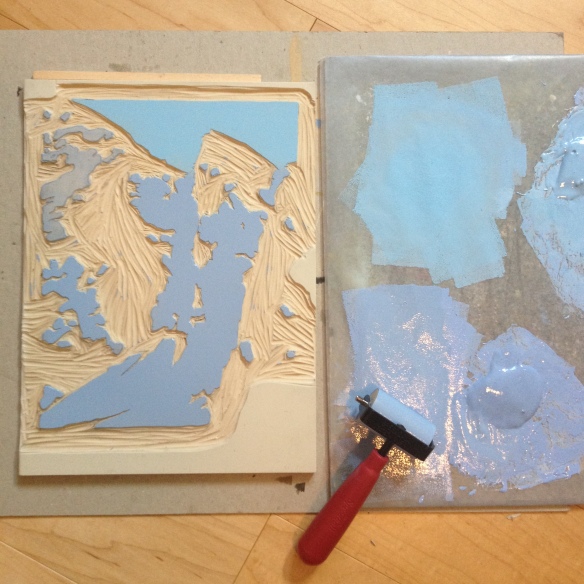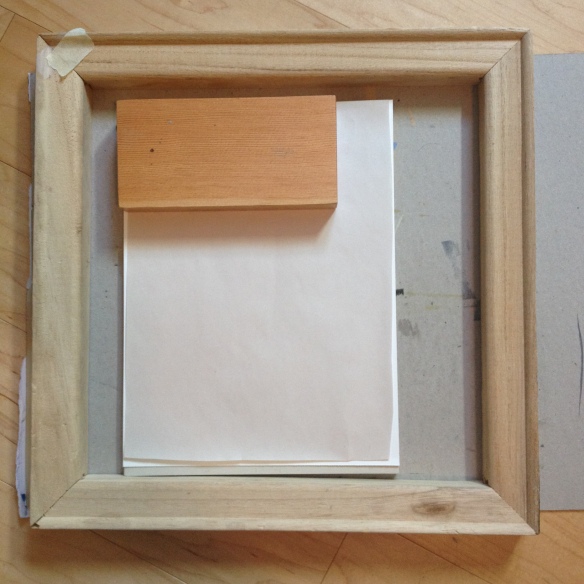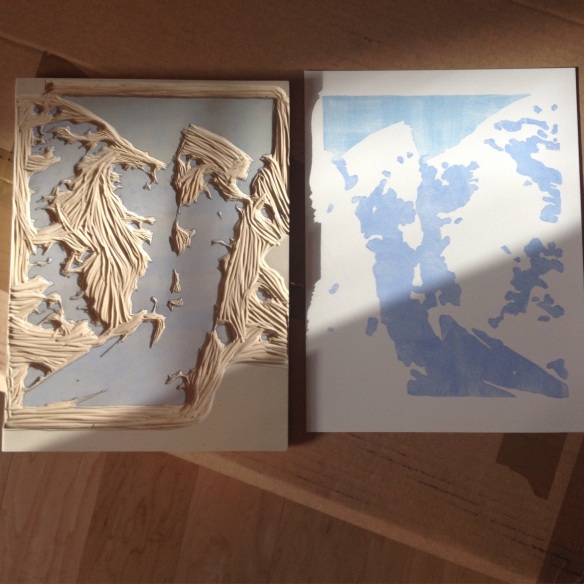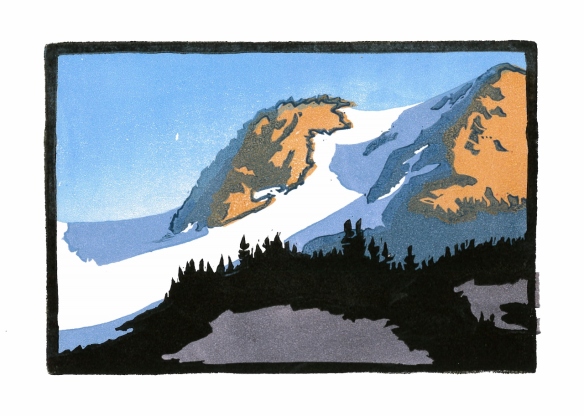For Part 1 of this post, click here.
Finishing a print brings strange feelings sometimes. During the creating process, there’s a sense of hope and joy and optimism – a falling in love with what could be, akin to those thrilling first few dates with someone new.
But then, once the print is finished, it is like being catapulted into your fifth year of marriage. Suddenly the shine and freshness has rubbed off, and you are left to look, unflinchingly, at the reality that remains. Invariably, as with all aging processes, you see both deep beauty and emerging flaws. The ratio depends as much on the care you took in getting to this moment as your sunny or cloudy state of mind.
In Part 1 of this post, I described the first stage of this print – carving the lino block and printing the blue sky and snow. Next, I carved and printed the sun-splashed rocks.
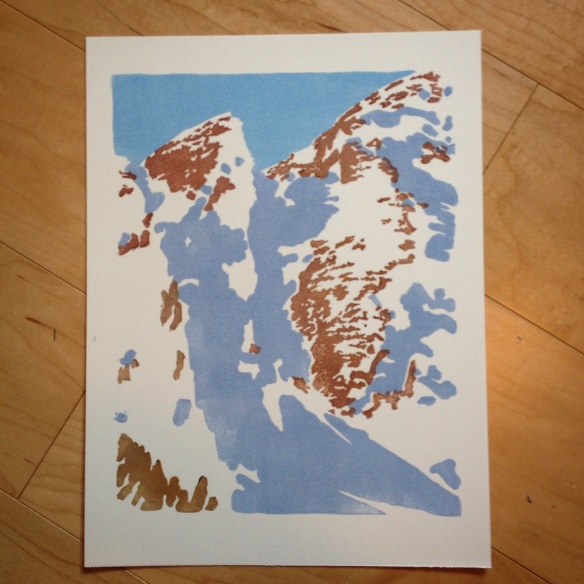
Mountain Linocut Print – Watching Ink Dry
I waited for a week while the ink layers dried, yearning to print the final layer more each day.
Finally, the weekend came and the first ink layers were dry. Time to print again! I spent an hour mixing and testing the perfect shade for the shadowed rocks: a mix of Burnt Sienna, Ultramarine Blue and Mars Black.
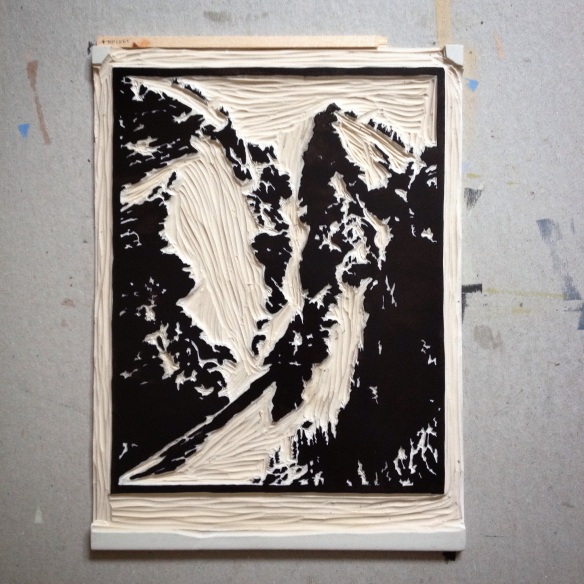
Final Linocut Block Inked and Ready To Print
With my pulse racing, I got ready to print this final layer. I was nervous! Would everything line up? Would it turn out the way I envisioned?
And voila – the final print!
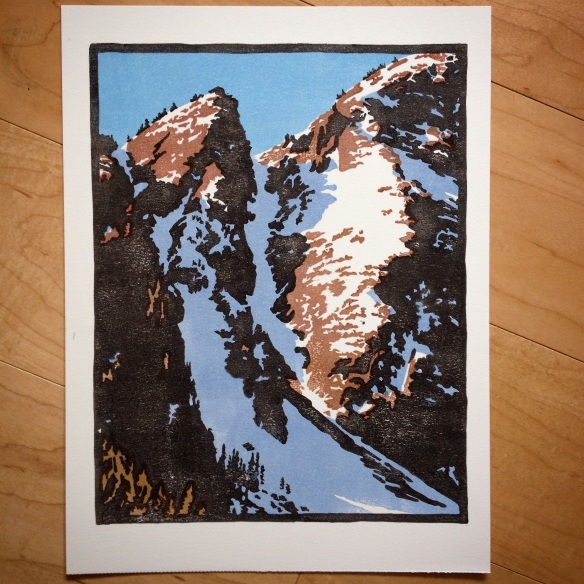
The Completed Print
I am very happy with how it turned out. I love the sense of light and the warm-cool feeling of a sunny spring day.
And yet.
Remember that marriage analogy? When I first pulled this print off the block, I saw some flaws and could not “un-see” them. There are improvements to be made. I love this print enough to continue working with it, to give it the full and loving attention it deserves.
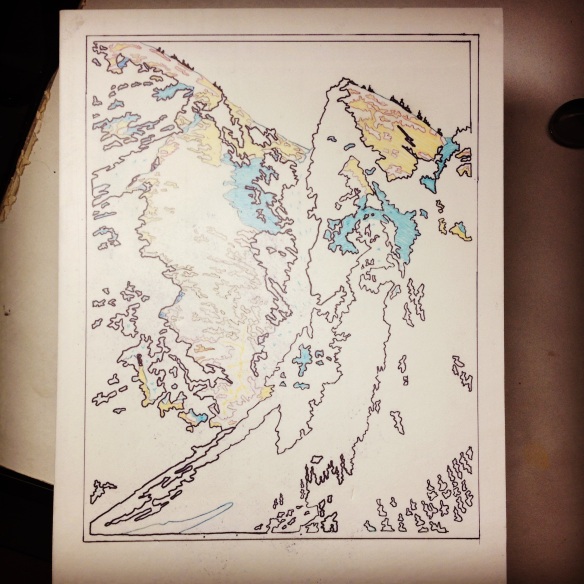
New Linocut Block Prepared For Carving
And so, the journey starts again.
Thank you for reading,
All the best to you.
Sophie

